Related Research Articles

Bugs Bunny is a fictional character created in the late 1930s at Warner Bros. Cartoons and voiced originally by Mel Blanc. Bugs is best known for his featured roles in the Looney Tunes and Merrie Melodies series of animated short films, produced by Warner Bros. Earlier iterations of the character first appeared in Ben Hardaway's Porky's Hare Hunt (1938) and subsequent shorts before Bugs's definitive characterization debuted in Tex Avery's A Wild Hare (1940). Bob Givens, Chuck Jones, and Robert McKimson are credited for defining Bugs's design.
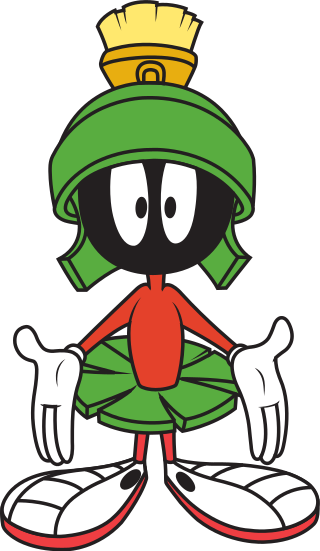
Marvin the Martian is an alien race character from the Looney Tunes and Merrie Melodies series. He frequently appears as a villain in cartoons and video games, and wears a Roman soldier's helmet and skirt. The character has been voiced by Mel Blanc, Joe Alaskey, Bob Bergen and Eric Bauza, among others.

Yosemite Sam is a cartoon character in the Looney Tunes and Merrie Melodies series of short films produced by Warner Bros. His name is taken from Yosemite National Park in California. He is an adversary of Bugs Bunny and his archenemy alongside Elmer Fudd. He is commonly depicted as a mean-spirited and extremely aggressive, gunslinging outlaw or cowboy with a hair-trigger temper and an intense hatred of rabbits, Bugs in particular. In cartoons with non-Western themes, he uses various aliases, including "Chilkoot Sam" and "Square-deal Sam" in 14 Carrot Rabbit, "Riff Raff Sam" in Sahara Hare, "Sam Schultz" in Big House Bunny, "Seagoin' Sam" in Buccaneer Bunny, "Shanghai Sam" in Mutiny on the Bunny, "Von Schamm the Hessian" in Bunker Hill Bunny, "Baron Sam von Schpamm" in Dumb Patrol, and many others. During the golden age of American animation, Yosemite Sam appeared as antagonist in 33 animated shorts made between 1945 and 1964.
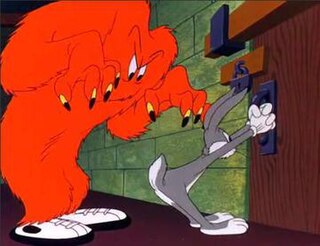
Gossamer is an animated character in the Warner Bros. Looney Tunes and Merrie Melodies series of cartoons. He is a large, hairy, orange or red monster. His body is perched on two giant tennis shoes, and his heart-shaped face is composed of only two oval eyes and a wide mouth, with two hulking arms ending in dirty, clawed fingers. The monster's main trait is his uncombed, orange hair. He originally was voiced by Mel Blanc and has been voiced by Frank Welker, Maurice LaMarche, Joe Alaskey, Jim Cummings, Kwesi Boakye, Eric Bauza and currently Fred Tatasciore.

Duck Dodgers in the 24+1/2th Century is a 1953 Warner Bros. Merrie Melodies cartoon directed by Chuck Jones. The cartoon was released on July 25, 1953, and stars Daffy Duck as space hero Duck Dodgers, Porky Pig as his assistant, and Marvin the Martian as his opponent. This cartoon marked the first of many appearances of the Duck Dodgers character.

Looney Tunes Golden Collection: Volume 1 is a DVD box set that was released by Warner Home Video on October 28, 2003. The first release of the Looney Tunes Golden Collection DVD series, it contains 56 Looney Tunes and Merrie Melodies cartoons and numerous supplements. The set won the Classic Award at the Parents' Choice Awards.

The Bugs Bunny/Road Runner Movie is a 1979 American animated comedy package film directed by Chuck Jones, consisting of a compilation of classic Looney Tunes/Merrie Melodies shorts and newly animated bridging sequences hosted by Bugs Bunny. The bridging sequences, which had been produced in 1978, show Bugs at his home, which is cantilevered over a carrot-juice waterfall. The film was released to celebrate the 40th anniversary of Bugs Bunny.
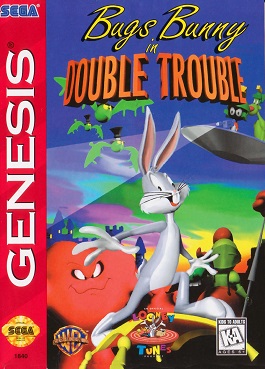
Bugs Bunny in Double Trouble is a Looney Tunes video game developed by Atod AB for the Sega Genesis and Game Gear, released in 1996. The game stars Bugs Bunny and features pre-rendered 3D graphics.

Haredevil Hare is a 1948 Looney Tunes cartoon directed by Chuck Jones. It stars Bugs Bunny and it is the debut for Marvin the Martian — although he is unnamed in this film—along with his Martian dog, K-9. Marvin's nasal voice for this first film is different from the later one he is most known for. This is also the last pre-August 1948 Looney Tunes and Merrie Melodies cartoon whose copyright was sold to Associated Artists Productions.
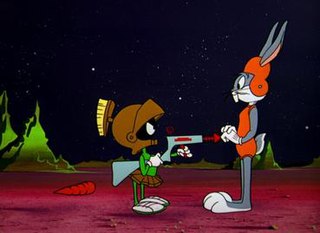
Mad as a Mars Hare is a 1963 Warner Bros. Merrie Melodies cartoon directed by Chuck Jones and Maurice Noble. The short was released on October 19, 1963, and stars Bugs Bunny and Marvin the Martian. The cartoon's title is a play-on-words of the famous phrase to be "mad as a March hare". This is Marvin's final appearance in the Looney Tunes shorts during the Golden Age of American Animation.

The Hasty Hare is a 1952 Warner Bros. Looney Tunes cartoon directed by Chuck Jones. The short was released on June 7, 1952, and features Bugs Bunny and Marvin the Martian. The title is a pun on the film title The Hasty Heart.
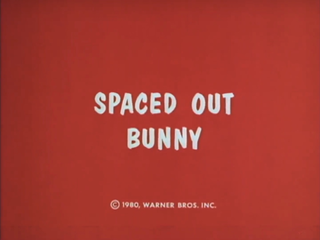
Spaced Out Bunny is a Warner Bros. cartoon starring Bugs Bunny and Marvin the Martian. The cartoon was part of the television special Bugs Bunny's Bustin' Out All Over on CBS, which aired May 21, 1980.

Hare-Breadth Hurry is a 1963 Warner Bros. Looney Tunes cartoon directed by Chuck Jones and Maurice Noble. The cartoon was released on June 8, 1963, and stars Bugs Bunny and Wile E. Coyote.
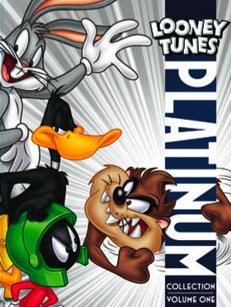
Looney Tunes Platinum Collection: Volume 1 is a Blu-ray Disc and DVD box set by Warner Home Video. It was released on November 15, 2011. It contains 50 Looney Tunes and Merrie Melodies cartoons and numerous supplements. A DVD version of the box set was released on July 3, 2012, but contained no extras.

Hugo the Abominable Snowman is a character in the Looney Tunes franchise.

Looney Tunes: Rabbits Run is a 2015 American animated direct-to-video adventure comedy film in the Looney Tunes franchise produced by Warner Bros. Animation. It is the first new Looney Tunes direct-to-video film since Bah, Humduck! A Looney Tunes Christmas was released nine years prior. The film was made shortly after The Looney Tunes Show, and shares much of the same crew as that series, including director Jeff Siergey, who had also been a supervising animator on Space Jam and lead animator on Looney Tunes: Back in Action. It was released on August 4, 2015, by Warner Bros. Discovery Home Entertainment, but it was released early on July 7, 2015 on Vudu and Walmart.
Bugs Bunny in Space is a Looney Tunes television special that originally aired on CBS September 6, 1977. Assembled to capitalize on the enormous success of the original Star Wars film in summer 1977, the special is a compilation of clips from science fiction themed Warner Bros. Cartoons, including Duck Dodgers in the 24½th Century.
Stars of Space Jam is a collection of Looney Tunes VHS tapes released in 1996 to promote the release of Space Jam. A Japanese LaserDisc of this set was released around the same time. Each tape/side featured six cartoons, most of which had not been made available on home video before. This was also notably the first video series with a video featuring all the cartoons of the Tasmanian Devil. The series was discontinued around the time the Looney Tunes Presents video series came out.
References
- ↑ Beck, Jerry; Friedwald, Will (1989). Looney Tunes and Merrie Melodies: A Complete Illustrated Guide to the Warner Bros. Cartoons. Henry Holt and Co. p. 307. ISBN 0-8050-0894-2.
- ↑ Lenburg, Jeff (1999). The Encyclopedia of Animated Cartoons . Checkmark Books. pp. 60-62. ISBN 0-8160-3831-7 . Retrieved 6 June 2020.